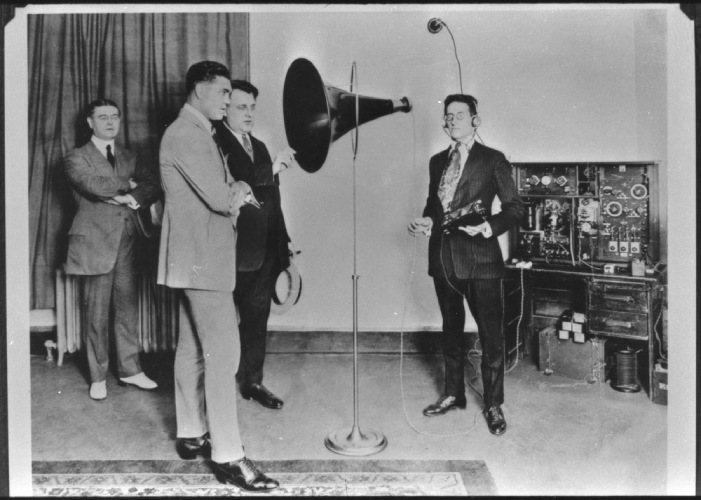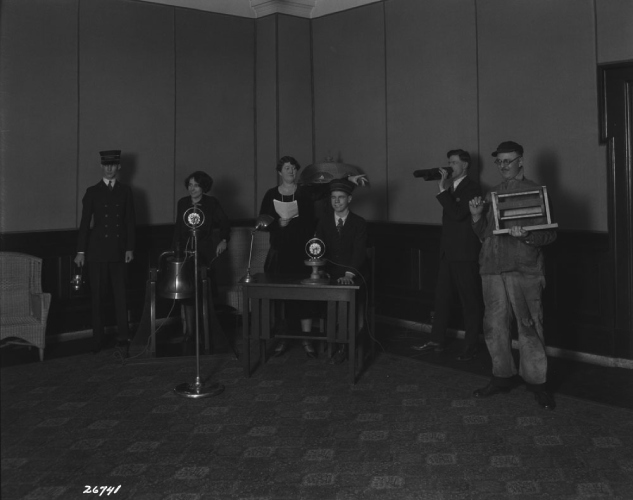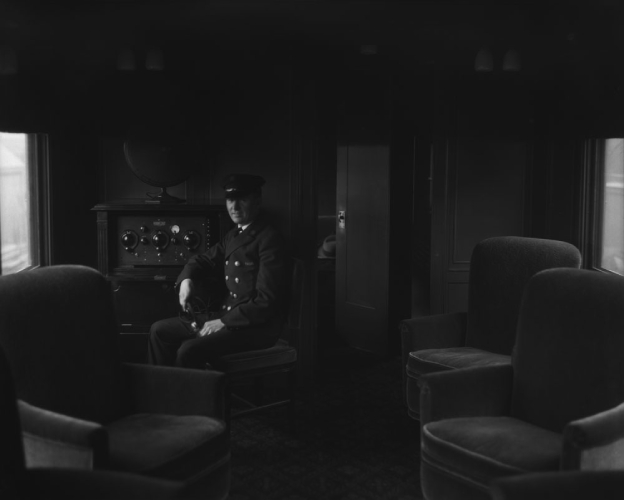Early Commercial Radio Broadcasting in Canada, 1918-1932 National Historic Event

© Library and Archives Canada / C-066695 / Copyright: Expired
Early Commercial Radio Broadcasting in Canada, 1918-1932 was designated a national historic event in July 2019.
Historical lmportance: In the years before government involvement in radio, commercial broadcasters established a new Canadian industry.
Early Commercial Radio Broadcasting in Canada, 1918-1932
Commercial radio in Canada began with Montréal station XWA. From its first broadcasts until the creation of a public system in 1932, a radio craze swept the country, establishing a new mass communication industry that would dramatically alter the way in which Canadians consumed news and entertainment. With new French and English-language stations going on the air and thousands of radio receivers sold across the country, private broadcasting in Canada quickly became a dominant cultural and economic force. French and English-language private radio stations established during this period provided some of the initial infrastructure for national radio in Canada, and greatly influenced Canada’s public broadcasting system, starting with the Canadian Radio Broadcasting Commission in 1932. By transmitting in both French and English, radio brought social and political discussion and debate into Canadian homes, merging public and private spaces to engage a wide cross-section of Canadians.
Commercial radio in Canada got its start with the Marconi Wireless Telegraph Company of Canada in 1918. From its rudimentary Montréal facility, this company experimented with wireless broadcasting and received a licence for station XWA in December 1919. A year later, the station started a regular schedule of transmissions.

© Library and Archives Canada / Copyright: Expired

© Library and Archives Canada / Copyright: Expired
From that single station grew an industry that over the course of the next 12 years ushered in the modern era of mass communication. By 1922, there were 39 radio stations in Canada. This ‘radio craze’ captured Canadians’ attention, as radio shifted from a medium dominated by hobbyists to one with a significant commercial presence. Between 1922 and 1932, the number of commercial radio stations nearly doubled to 77, bringing live music, social discussion, political debate, sports, and plays to listeners. That growth was matched with radio sales, as 52,500 radio sets were sold in Canada in 1928. By 1931, that number had jumped to 173,200. Even in the midst of the Great Depression, the radio industry was growing.
With the expansion in the number of stations and radio sales across the country, national programming became a possibility in the late 1920s. The Canadian National Railway (CNR) built a national network using a combination of its own stations and ‘phantom’ stations to provide entertainment to passengers on board its trains. The network used telegraph and telephone lines along the railway to connect its stations. With that as a model, commercial stations connected to provide national coverage of major events. The most prominent of these occurred in July 1927 when CFCF (formerly XWA) served as the anchor station for the coast-to-coast broadcast that marked Canada’s Diamond Jubilee.
The Canadian Radio Broadcasting Commission, Canada’s first public broadcaster, was established in 1932 and with it the era of exclusively private radio came to an end, but it was a period that would establish the basis of Canadian broadcasting for the 20th century. In a little over a decade, radio had gone from a niche hobby to a major cultural industry.
The National Program of Historical Commemoration relies on the participation of Canadians in the identification of places, events and persons of national historic significance. Any member of the public can nominate a topic for consideration by the Historic Sites and Monuments Board of Canada.
- Date modified :